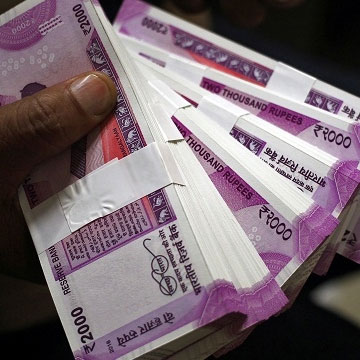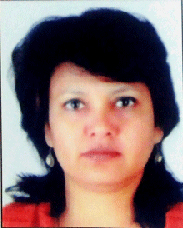 New Delhi:
New Delhi: It took barely two months since the demonetisation policy was announced for Pakistan-based counterfeiters to come out with fake Rs 2,000 notes, which were pushed by smugglers through the porous India-Bangladesh border, official sources told The Indian Express, citing recent seizures and arrests made by the National Investigation Agency (NIA) and Border Security Force (BSF).
The latest seizures were made on February 8 in Murshidabad from Azizur Rahman (26), who hails from Malda in West Bengal. Sources said Rahman, who was carrying 40 fake notes of Rs 2,000 denomination, told investigators that they had been printed in Pakistan, allegedly with the help of the Inter Services Intelligence (ISI), and had been smuggled across the border from Bangladesh.
Citing interrogation records, sources said smugglers were required to pay Rs 400-600 in genuine currency for each fake Rs 2,000 note, depending on the quality.
According to sources, a study by investigators and experts of the seized notes revealed that at least 11 of the 17 security features in the new Rs 2,000 notes had been replicated. They included the transparent area, watermark, Ashoka Pillar emblem, the letters ‘Rs 2000’ on the left, the guarantee clause with the RBI governor’s signature and the denomination number in Devanagari on the front, said sources.
Citing experts, sources said the motif of Chandrayaan, the Swachh Bharat logo and the year of printing had been copied on the reverse side. Although the print and paper quality of the seized counterfeits were poor, they resembled genuine notes, they said. Besides, the seized notes had the water mark and a crackling sound, similar to genuine currency, said officials.
“The quality has improved from the last time and it is difficult to detect a fake note with naked eyes now. Last month, the FICN (Fake Indian Currency Note) smugglers pushed some sample notes of the new Rs 2,000 and Rs 500 denomination in small numbers to check their feasibility for circulation. We fear that they will be seen in the market very soon,” said a senior official linked to the probe.
Sources said the first known attempt to smuggle fake currency was made in the last week of December 2016, when samples from across the border were sent for approval to smugglers in Malda.
The first seizures of such notes were recorded on January 22 and on February 4, when Piyarul Sheikh (16) and Digamber Mondol (42), both from Kaliachak in Malda, were arrested by the local police and NIA.
According to officials of the Securities Printing and Minting Corporation of India Limited (SPMCIL), the newly introduced notes had no additional security features and were similar to those in the old Rs 1,000 and Rs 500 notes.
“It is a mammoth exercise and needs several rounds of consultation before the new security features are added. There was no time to introduce additional security features in the remonetised Rs 2,000 and Rs 500 notes as the decision was taken only five months ago. The last time security features were upgraded was in 2005,” said an SPMCIL official, on the condition of anonymity.
On November 8, 2016, Prime Minister Narendra Modi had announced the move to scrap Rs 1,000 and Rs 500 notes to flush out high-denomination fake currency, mostly printed in Pakistan and circulated in India to destabilise the economy. This January, the government had cited Intelligence reports to say that the two main printing presses engaged in printing counterfeit Indian currency in Pakistan had been forced to shut.
According to a 2016 study conducted by the Indian Statistical Institute (ISI) in Kolkata, the value of FICN in circulation was pegged at Rs 400 crore.
 New Delhi: It took barely two months since the demonetisation policy was announced for Pakistan-based counterfeiters to come out with fake Rs 2,000 notes, which were pushed by smugglers through the porous India-Bangladesh border, official sources told The Indian Express, citing recent seizures and arrests made by the National Investigation Agency (NIA) and Border Security Force (BSF).
New Delhi: It took barely two months since the demonetisation policy was announced for Pakistan-based counterfeiters to come out with fake Rs 2,000 notes, which were pushed by smugglers through the porous India-Bangladesh border, official sources told The Indian Express, citing recent seizures and arrests made by the National Investigation Agency (NIA) and Border Security Force (BSF).